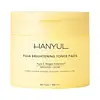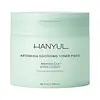What's inside
What's inside
 Key Ingredients
Key Ingredients

 Benefits
Benefits

 Concerns
Concerns

 Ingredients Side-by-side
Ingredients Side-by-side

Water
Skin ConditioningButylene Glycol
HumectantNiacinamide
Smoothing1,2-Hexanediol
Skin ConditioningPropanediol
SolventPolyglyceryl-10 Laurate
Skin ConditioningEthylhexylglycerin
Skin Conditioning3-O-Ethyl Ascorbic Acid
Skin ConditioningAdenosine
Skin ConditioningGardenia Florida Fruit Extract
Skin ConditioningXanthan Gum
EmulsifyingMaltodextrin
AbsorbentLimonene
PerfumingCitric Acid
BufferingPolyquaternium-51
Skin ConditioningCitrus Junos Peel Oil
AstringentDextrin
AbsorbentSodium Phytate
Glucosyl Hesperidin
HumectantLactobacillus Ferment
Skin ConditioningBioflavonoids
Skin ConditioningLinalool
PerfumingAscorbic Acid
AntioxidantTranexamic Acid
AstringentPinus Strobus Bark Extract
Skin ConditioningTocopherol
AntioxidantCitrus Junos Peel Extract
Skin ConditioningGlutathione
Water, Butylene Glycol, Niacinamide, 1,2-Hexanediol, Propanediol, Polyglyceryl-10 Laurate, Ethylhexylglycerin, 3-O-Ethyl Ascorbic Acid, Adenosine, Gardenia Florida Fruit Extract, Xanthan Gum, Maltodextrin, Limonene, Citric Acid, Polyquaternium-51, Citrus Junos Peel Oil, Dextrin, Sodium Phytate, Glucosyl Hesperidin, Lactobacillus Ferment, Bioflavonoids, Linalool, Ascorbic Acid, Tranexamic Acid, Pinus Strobus Bark Extract, Tocopherol, Citrus Junos Peel Extract, Glutathione
Water
Skin ConditioningButylene Glycol
HumectantGlycerin
HumectantArtemisia Argyi Leaf Water
Skin Conditioning1,2-Hexanediol
Skin ConditioningPanthenol
Skin ConditioningPolyglyceryl-10 Laurate
Skin ConditioningAllantoin
Skin Conditioning2,3-Butanediol
HumectantEthylhexylglycerin
Skin ConditioningParfum
MaskingXanthan Gum
EmulsifyingDipropylene Glycol
HumectantDisodium EDTA
Hydroxyethylcellulose
Emulsion StabilisingDipotassium Glycyrrhizate
HumectantSodium Hyaluronate
HumectantSodium Citrate
BufferingCitric Acid
BufferingPropanediol
SolventLecithin
EmollientLactobacillus Ferment
Skin ConditioningMethyl Diisopropyl Propionamide
MaskingBeta-Glucan
Skin ConditioningInulin Lauryl Carbamate
Emulsion StabilisingArtemisia Argyi Leaf Extract
Skin ConditioningCentella Asiatica Flower/Leaf/Stem Extract
Skin ConditioningTocopherol
AntioxidantWater, Butylene Glycol, Glycerin, Artemisia Argyi Leaf Water, 1,2-Hexanediol, Panthenol, Polyglyceryl-10 Laurate, Allantoin, 2,3-Butanediol, Ethylhexylglycerin, Parfum, Xanthan Gum, Dipropylene Glycol, Disodium EDTA, Hydroxyethylcellulose, Dipotassium Glycyrrhizate, Sodium Hyaluronate, Sodium Citrate, Citric Acid, Propanediol, Lecithin, Lactobacillus Ferment, Methyl Diisopropyl Propionamide, Beta-Glucan, Inulin Lauryl Carbamate, Artemisia Argyi Leaf Extract, Centella Asiatica Flower/Leaf/Stem Extract, Tocopherol
Ingredients Explained
These ingredients are found in both products.
Ingredients higher up in an ingredient list are typically present in a larger amount.
1,2-Hexanediol is a synthetic liquid and another multi-functional powerhouse.
It is a:
- Humectant, drawing moisture into the skin
- Emollient, helping to soften skin
- Solvent, dispersing and stabilizing formulas
- Preservative booster, enhancing the antimicrobial activity of other preservatives
Butylene Glycol (or BG) is used within cosmetic products for a few different reasons:
Overall, Butylene Glycol is a safe and well-rounded ingredient that works well with other ingredients.
Though this ingredient works well with most skin types, some people with sensitive skin may experience a reaction such as allergic rashes, closed comedones, or itchiness.
Learn more about Butylene GlycolCitric Acid is an alpha hydroxy acid (AHA) naturally found in citrus fruits like oranges, lemons, and limes.
Like other AHAs, citric acid can exfoliate skin by breaking down the bonds that hold dead skin cells together. This helps reveal smoother and brighter skin underneath.
However, this exfoliating effect only happens at high concentrations (20%) which can be hard to find in cosmetic products.
Due to this, citric acid is usually included in small amounts as a pH adjuster. This helps keep products slightly more acidic and compatible with skin's natural pH.
In skincare formulas, citric acid can:
While it can provide some skin benefits, research shows lactic acid and glycolic acid are generally more effective and less irritating exfoliants.
Most citric acid used in skincare today is made by fermenting sugars (usually from molasses). This synthetic version is identical to the natural citrus form but easier to stabilize and use in formulations.
Read more about some other popular AHA's here:
Learn more about Citric AcidEthylhexylglycerin (we can't pronounce this either) is commonly used as a preservative and skin softener. It is derived from glyceryl.
You might see Ethylhexylglycerin often paired with other preservatives such as phenoxyethanol. Ethylhexylglycerin has been found to increase the effectiveness of these other preservatives.
Lactobacillus Ferment is created by fermenting the Lactobacillus bacteria. It helps keep our skin's natural barrier and microbiome healthy.
Studies show lactobacillus ferment to be effective at repairing the skin barrier. Having a healthy skin barrier helps keep your skin healthy and hydrated. It also protects against bad bacteria.
As a probiotic/prebiotic/postbiotic, Lactobacillus ferment can help regular our natural biome. In fact, one study found a lack of diversity in our natural skin biome can trigger acne.
Learn more about Lactobacillus FermentPolyglyceryl-10 Laurate is an ester of lauric acid and Polyglycerin-10.
Polyglyceryl-10 Laurate is a cleansing agent and emulsifier. It helps gather dirt, oil, and other pollutants to be rinsed away. As an emulsifier, it helps prevent ingredients from separating, such as oil and water.
Polyglyceryl-10 Laurate may not be fungal acne safe.
Learn more about Polyglyceryl-10 LauratePropanediol is an all-star ingredient. It softens, hydrates, and smooths the skin.
It’s often used to:
Propanediol is not likely to cause sensitivity and considered safe to use. It is derived from corn or petroleum with a clear color and no scent.
Learn more about PropanediolTocopherol (also known as Vitamin E) is a common antioxidant used to help protect the skin from free-radicals and strengthen the skin barrier. It's also fat soluble - this means our skin is great at absorbing it.
Vitamin E also helps keep your natural skin lipids healthy. Your lipid skin barrier naturally consists of lipids, ceramides, and fatty acids. Vitamin E offers extra protection for your skin’s lipid barrier, keeping your skin healthy and nourished.
Another benefit is a bit of UV protection. Vitamin E helps reduce the damage caused by UVB rays. (It should not replace your sunscreen). Combining it with Vitamin C can decrease sunburned cells and hyperpigmentation after UV exposure.
You might have noticed Vitamin E + C often paired together. This is because it is great at stabilizing Vitamin C. Using the two together helps increase the effectiveness of both ingredients.
There are often claims that Vitamin E can reduce/prevent scarring, but these claims haven't been confirmed by scientific research.
Learn more about TocopherolWater. It's the most common cosmetic ingredient of all. You'll usually see it at the top of ingredient lists, meaning that it makes up the largest part of the product.
So why is it so popular? Water most often acts as a solvent - this means that it helps dissolve other ingredients into the formulation.
You'll also recognize water as that liquid we all need to stay alive. If you see this, drink a glass of water. Stay hydrated!
Learn more about WaterXanthan gum is used as a stabilizer and thickener within cosmetic products. It helps give products a sticky, thick feeling - preventing them from being too runny.
On the technical side of things, xanthan gum is a polysaccharide - a combination consisting of multiple sugar molecules bonded together.
Xanthan gum is a pretty common and great ingredient. It is a natural, non-toxic, non-irritating ingredient that is also commonly used in food products.
Learn more about Xanthan Gum